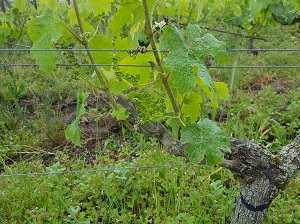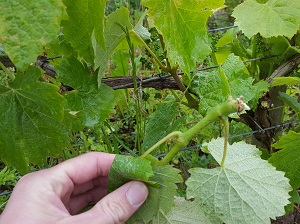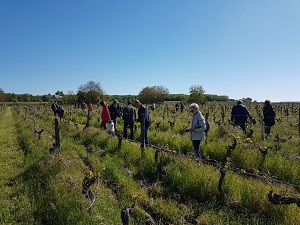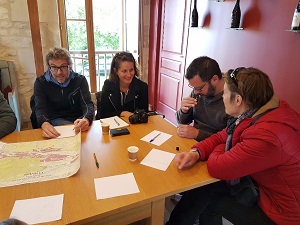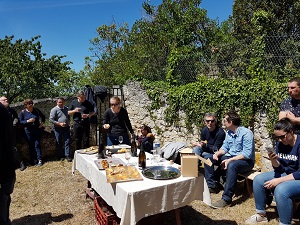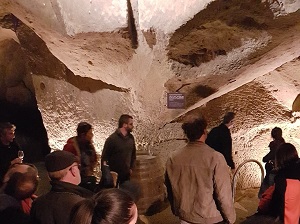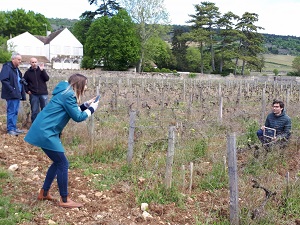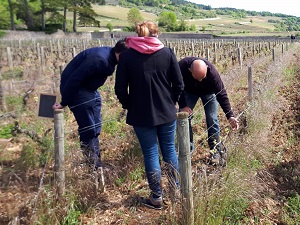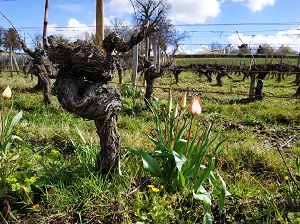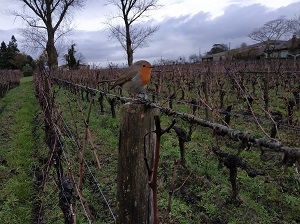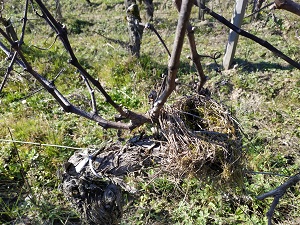We spent last Saturday in Alsace at Domaine Stentz-Buecher for a Discovery Experience Day. The objective of the day was to learn about all of the work in the vineyard needed to produce the best possible grapes come harvest time, and as we were to find out, there is lots to do!
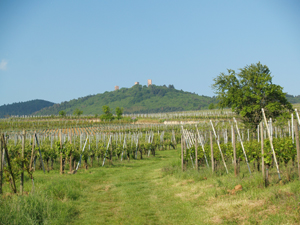
After the introductions to the winery and family history by Céline, we made our way through the vineyards. On the way, Céline showed us the different terroir, and pointed out the Hengst and Steingrubler Grand Cru vineyards slightly further up the hillside.
We arrived at the Rosenberg vineyard, home to our Pinot Gris adopted wines. We took a few minutes to take a few pictures of our vines and to say a few words of encouragement for this year’s harvest.
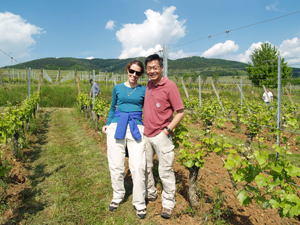
Jean-Jacques, Céline’s father and founder of the winery, joined us and brought us up to speed on the work that has been carried out in the vineyard during the winter. He explained the importance of pruning the vines and how it is done, the need to protect the vines during the colder winter months from the frost by heaping soil around the vine stocks, and the laborious task of repairing the training posts and wires. He also showed us the plot next to our vines which was replanted 4 years ago, and will produce the first grapes this year.
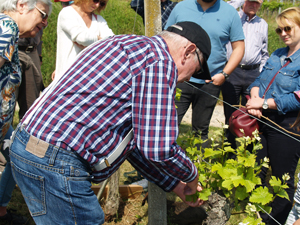
The buds burst on the vines at the end of March, and since then the shoots have sprung to life. A little slower than the last couple of years when the harvest was very early, but in line with a more normal year. This time of year is principally taken up with de-budding, and after pruning, it is probably the most important task in controlling the yield and improving the quality of the grapes.
Jean-Jacques demonstrated how to select which shoots to keep and which to remove. Remove any shoots that have sprout from below the head on the trunk, and remove the weaker branch from any double shoots.
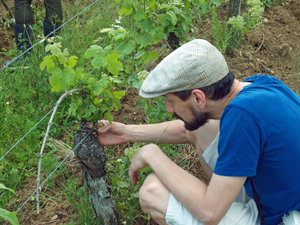
Sounds easy in theory, but once we had spread out among the rows and started having a go ourselves, we quickly learnt that there are many exceptions to the rule! To keep the growth at the same height among the vines, we are always trying to keep the growth as low as possible. This means that sometimes we leave a shoot lower than this year’s branch, so that we can use it next year. As with pruning you always have to think at least one year ahead! After a few tentative tries, and clarifying questions, we gradually gained in confidence!
We then headed back to the winery, where Céline gave us a wine tasting session, starting with the delicious 2015 Riesling Ortel. We then tasted the 2017 vintage of the wine chosen for the Gourmet Odyssey Experience, the Pinot Gris Rosenberg, followed by the 2012 Pinot Noir. Next up, a 2015 Gewurztraminer Hengst Grand Cru, followed by a surprisingly full bodied 2015 Pinot Blanc Vielles Vignes white wine.
A local caterer had prepared a delicious baeckeofe for us, and we continued the wine tasting with the 2017 Who Am I?, a blend of Pinot Blanc, Pinot Gris and Riesling. Céline served a 2016 Gewürztraminer Rosenberg with cheese, and the meal ended with a tasty blueberry tart.
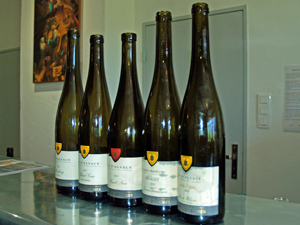
After lunch we had a tour of the cellar where we were introduced to what happens to the grapes once they have been harvested. We’ll be learning more during the Harvest and Vinificiation Experience Days.
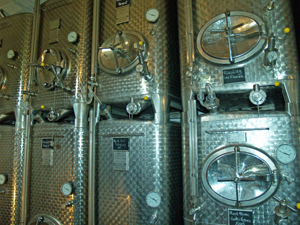
The day ended back in the vineyard, where Jean-Jacques explained the work yet to come in the vineyard between now and harvest time, and how they will monitor the grapes to choose when is the best time to start harvesting. The next critical phase should happen within the next couple of weeks, when the vines flower. How well this goes will set out the potential yield of the harvest, and will give the first indication of when the harvest is likely to start. The old adage says that the harvest will be 110 days after flowering. We will be closely monitoring the vines over the coming days.
Many thanks to the Stentz-Buecher family for sharing their passion for wine-making with us. We’ll be back again at the end of June for the next Discovery Experience Day.
Find out more about adopting vines in Alsace.



